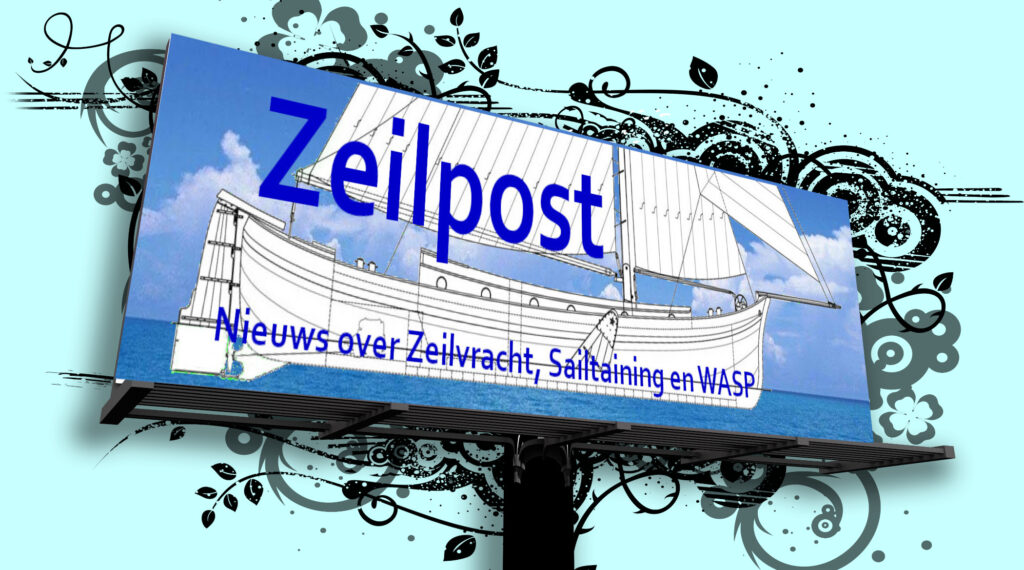The real News behind Ads and Advertorials
The editors receive numerous news and press releases. If that is mainly advertising, we do not post it, if there is news in it, we do. There are also intermediate forms, which offer great opportunities for, for instance, tallship owners.
Just a phone call from the editor to the sender of a press release: “We received your message, thank you, but we think it is a bit too much advertising and not enough news. If we take it over like this, we think it should be worth the price of an ad, which after all only costs fifty euros a time. And if you really have something new to report, we would also like to hear about it; at least then we can turn it into a good article.”
We make these calls with some regularity, and sometimes they lead to an advertisement, sometimes to nothing, and other times to a piece in the ‘Advertorial’ category: paid content that looks like a regular article. Nothing wrong with that, as long as it is clear who the sender is, and that it was paid for: this is how we keep our journalistic standards in order. And sometimes such a contact also produces a story that we can do more with, and post as a ‘regular’ news story. When the latter happens, we as editors are extra happy about it, because making news stories, that’s what we prefer to do anyway.
Readable stories
Nonetheless, in the field we work in, there is still quite a lot to argue about what you can still report as news, and what primarily serves a particular company’s revenue. For example: School at Sea is a company that likes to advertise itself, but also generates readable stories of young people getting their first ocean experience, taking care of their own sponsorship, and working on their personal development. We are happy to post those stories, there is no need to put a price on them; it is only when it becomes more about the company than the people that we enter a twilight zone. We have a lot of sympathy for organizations and companies that, like School at Sea, pursue particularly socially responsible goals, but we remain businesslike: that is important for our own survival as a news medium.
Win-Win
As we do not have an extensive paid editorial team, we are highly dependent on what we get delivered: looking for those stories ourselves takes time and money that we lack as a small foundation. To combine business with pleasure, we therefore like to encourage companies to transform their own press releases into stories of interest to our readers. Stories in which sails bulge, water splashes and you feel the wind in your hair. Stories that are primarily about people and boats, rather than the next opportunity to book a trip or purchase a product.
With enough ‘basic material’, we can help them do that quite well too, without having to go on reportage ourselves. Experience shows that writing is no mean feat: often the stories are there, but not written down in a publishable way right away. And sometimes there are lots of images, but there is not enough text to squeeze a good story out of them. Then the editors can step in and, in cooperation with the sender, turn it into a good story.
Such stories do not have to leave the sender unmentioned, and they can also present themselves as a sponsor of Zeepost, for instance with an advertising banner. This creates a win-win: not only the commercial attention of an ad, but also good stories that put the sender forward in a different light. By showcasing both, the company, editors and readers alike get the most out of publicity.
Package-deal
This can be particularly interesting for tallship owners, we think. Our readers love beautiful, exciting and surprising sea stories, and often already follow the voyages of ships from the Dutch and international sea fleet on their own accord. But the real stories of life on board are still too rare in our columns. We would like to change this by offering a package deal to eligible companies: become a sponsor of the Zeepost, and regularly provide images and basic material for good stories, which we can report as our own news – and not as paid content, because they have enough content of their own. The reach and impact of such stories in the ‘Posts’ is many times greater than a regular advertisement, which in most cases is also much more expensive. If those stories can be brought with some regularity, without the emphatic commercial orientation that an advertisement has, they get added value for all parties.
And it is not only tallship tours that produce stories worth reading. They can just as easily be found in shipyards, museum ports, heritage organisations and charter offices. So if there is interesting – and regular real news: bring it on!
In journalism, two categories of news are the most ‘feted’ worldwide: about accidents and about ‘real life’. The first category is out of your control as a journalist, and besides, you naturally hope you don’t have to cover it too often. But sources for the second category are always there; you just have to know how to tap into them. The call is hereby made. So sources: let’s hear from you!


